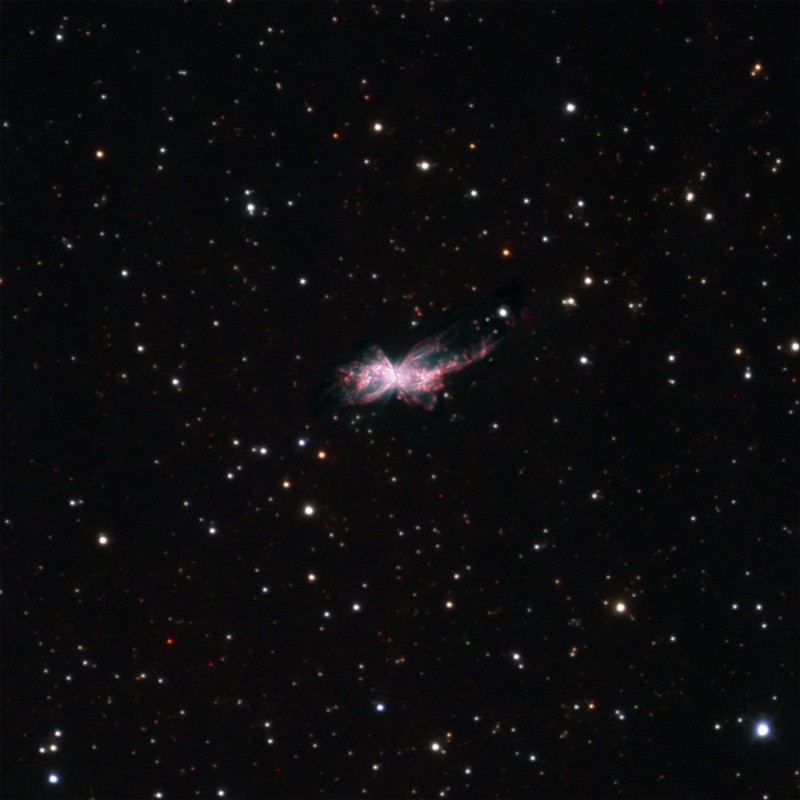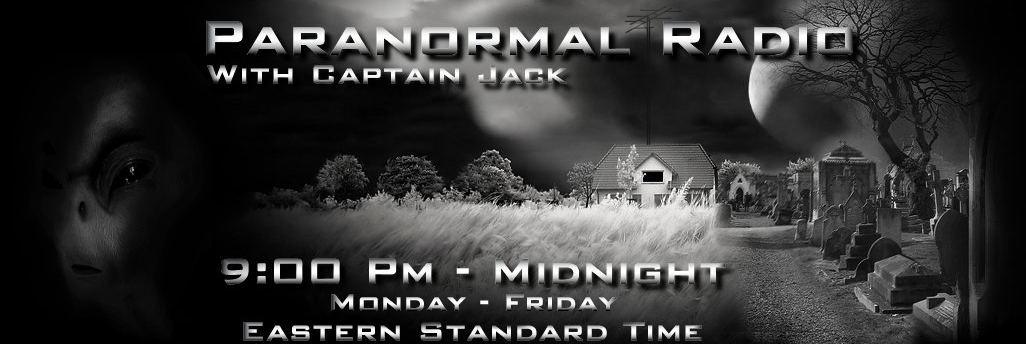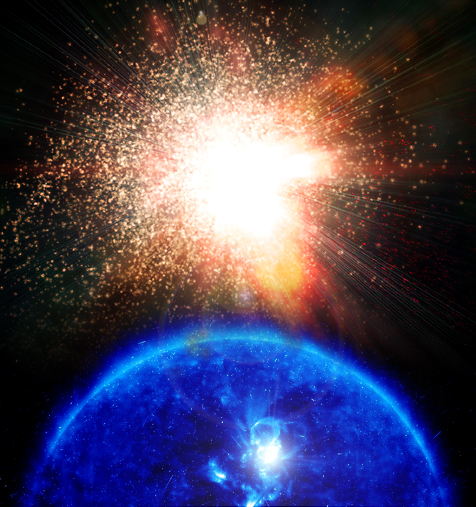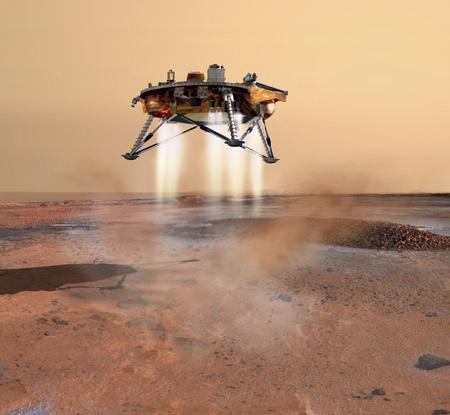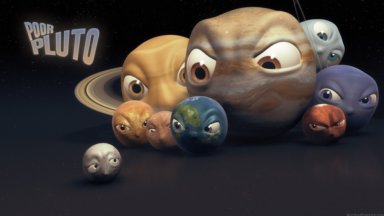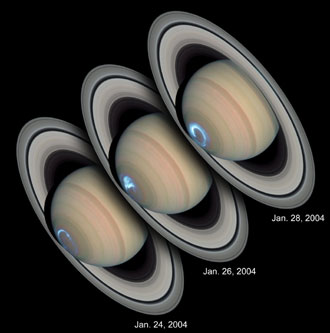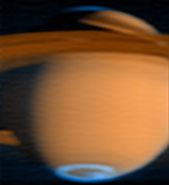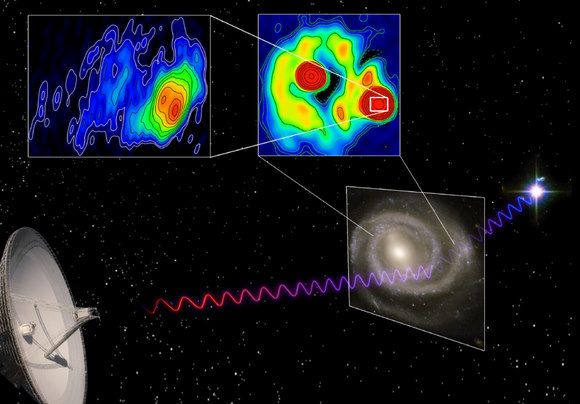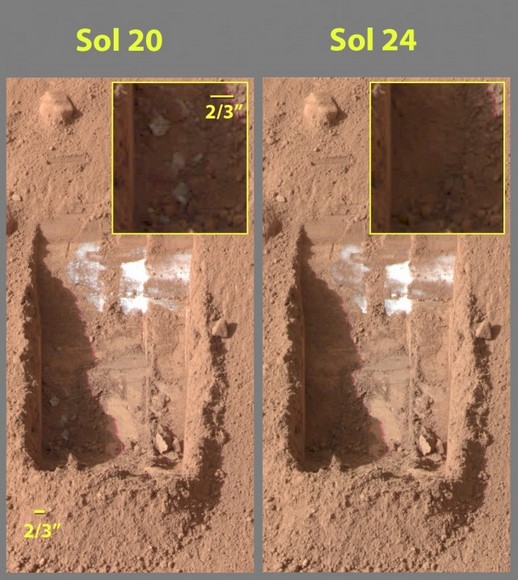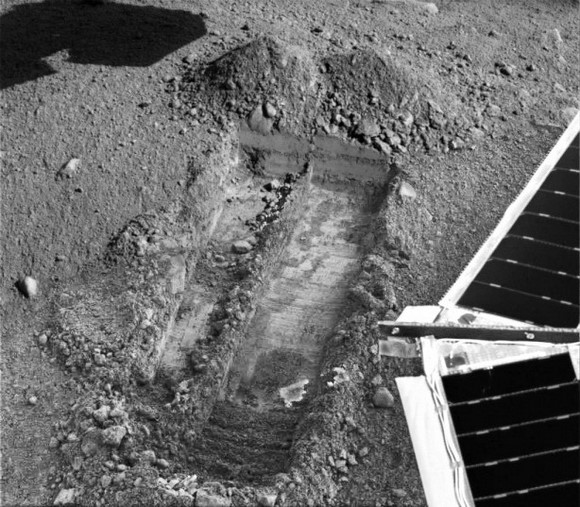We could be in for a huge firework display in 2012. The Sun will be approaching the peak of its 11-year cycle, called “solar maximum”, so we can expect a lot of solar activity. Some predictions put the solar maximum of Solar Cycle 24 even more energetic than the last solar maximum in 2002-2003 (remember all those record breaking X-class flares?). Solar physicists are already getting excited about this next cycle and new prediction methods are being put to good use. But should we be worried?
Related 2012 articles:
According to one of the many Doomsday scenarios we have been presented with in the run-up to the Mayan Prophecy-fuelled “end of the world” in the year 2012, this scenario is actually based on some science. What’s more, there may be some correlation between the 11-year solar cycle and the time cycles seen in the Mayan calendar, perhaps this ancient civilization understood how the Sun’s magnetism undergoes polarity changes every decade or so? Plus, religious texts (such as the Bible) say that we are due for a day of judgement, involving a lot of fire and brimstone. So it looks like we are going to get roasted alive by our closest star on December 21st, 2012!
Before we go jumping to conclusions, take a step back and think this through. Like most of the various ways the world is going to end in 2012, the possibility of the Sun blasting out a huge, Earth-damaging solar flare is very attractive to the doomsayers out there. But let’s have a look at what really happens during an Earth-directed solar flare event, the Earth is actually very well protected. Although some satellites may not be…
The Earth has evolved in a highly radioactive environment. The Sun constantly fires high-energy particles from its magnetically dominated surface as the solar wind. During solar maximum (when the Sun is at its most active), the Earth may be unlucky enough to be staring down the barrel of an explosion with the energy of 100 billion Hiroshima-sized atomic bombs. This explosion is known as a solar flare and the effects of which can cause problems here on Earth.
Before we look at the Earth-side effects, let’s have a look at the Sun and briefly understand why it gets so angry every 11 years or so.
The Solar Cycle
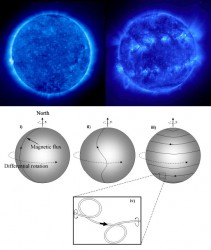
First and foremost, the Sun has a natural cycle with a period of approximately 11 years. During the lifetime of each cycle, the magnetic field lines of the Sun are dragged around the solar body by differential rotation at the solar equator. This means that the equator is spinning faster than the magnetic poles. As this continues, solar plasma drags the magnetic field lines around the Sun, causing stress and a build up of energy (an illustration of this is pictured). As magnetic energy increases, kinks in the magnetic flux form, forcing them to the surface. These kinks are known as coronal loops which become more numerous during periods of high solar activity.
This is where the sunspots come in. As coronal loops continue to pop up over the surface, sunspots appear too, often located at the loop footpoints. Coronal loops have the effect of pushing the hotter surface layers of the Sun (the photosphere and chromosphere) aside, exposing the cooler convection zone (the reasons why the solar surface and atmosphere is hotter than the solar interior is down to the coronal heating phenomenon). As magnetic energy builds up, we can expect more and more magnetic flux to be forced together. This is when a phenomenon known as magnetic reconnection occurs.
Reconnection is the trigger for solar flares of various sizes. As previously reported, solar flares from “nanoflares” to “X-class flares” are very energetic events. Granted, the largest flares my generate enough energy for 100 billion atomic explosions, but don’t let this huge figure concern you. For a start, this flare occurs in the low corona, right near the solar surface. That’s nearly 100 million miles away (1AU). The Earth is nowhere close to the blast.
As the solar magnetic field lines release a huge amount of energy, solar plasma is accelerated and confined within the magnetic environment (solar plasma is superheated particles like protons, electrons and some light elements such as helium nuclei). As the plasma particles interact, X-rays may be generated if the conditions are right and bremsstrahlung is possible. (Bremsstrahlung occurs when charged particles interact, resulting in X-ray emission.) This may create an X-ray flare.
The Problem with X-ray Solar Flares
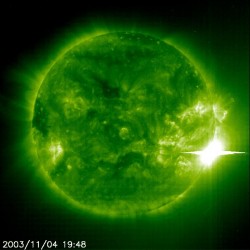
The biggest problem with an X-ray flare is that we get little warning when it is going to happen as X-rays travel at the speed of light (one of the record breaking 2003 solar flares is pictured left). X-rays from an X-class flare will reach the Earth in around eight minutes. As X-rays hit our atmosphere, they are absorbed in the outermost layer called the ionosphere. As you can guess from the name, this is a highly charged, reactive environment, full of ions (atomic nuclei, and free electrons).
During powerful solar events such as flares, rates of ionization between X-rays and atmospheric gases increase in the D and E region layers of the ionosphere. There is a sudden surge in electron production in these layers. These electrons can cause interference to the passage of radio waves through the atmosphere, absorbing short wave radio signals (in the high frequency range), possibly blocking global communications. These events are known as “Sudden Ionospheric Disturbances” (or SIDs) and they become commonplace during periods of high solar activity. Interestingly, the increase in electron density during a SID boosts the propagation of Very Low Frequency (VLF) radio, a phenomenon scientists use to measure the intensity of X-rays coming from the Sun.
Coronal Mass Ejections?
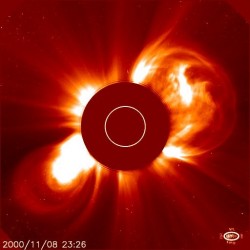
X-ray solar flare emissions are only part of the story. If the conditions are right, a coronal mass ejection (CME) might be produced at the site of the flare (although either phenomenon can occur independently). CMEs are slower than the propagation of X-rays, but their global effects here on Earth can be more problematic. They may not travel at the speed of light, but they still travel fast; they can travel at a rate of 2 million miles per hour (3.2 million km/hr), meaning they may reach us in a matter of hours.
This is where much effort is being put into space weather prediction. We have a handful of spacecraft sitting between the Earth and the Sun at the Earth-Sun Lagrangian (L1) point with sensors on board to measure the energy and intensity of the solar wind. Should a CME pass through their location, energetic particles and the interplanetary magnetic field (IMF) can be measured directly. One mission called the Advanced Composition Explorer (ACE) sits in the L1 point and provides scientists with up to an hour notice on the approach of a CME. ACE teams up with the Solar and Heliospheric Observatory (SOHO) and the Solar TErrestrial RElations Observatory (STEREO), so CMEs can be tracked from the lower corona into interplanetary space, through the L1 point toward Earth. These solar missions are actively working together to provide space agencies with advanced notice of an Earth-directed CME.
So what if a CME reaches Earth? For a start, much depends on the magnetic configuration of the IMF (from the Sun) and the geomagnetic field of the Earth (the magnetosphere). Generally speaking, if both magnetic fields are aligned with polarities pointing in the same direction, it is highly probable that the CME will be repelled by the magnetosphere. In this case, the CME will slide past the Earth, causing some pressure and distortion on the magnetosphere, but otherwise passing without a problem. However, if the magnetic field lines are in an anti-parallel configuration (i.e. magnetic polarities in opposite directions), magnetic reconnection may occur at the leading edge of the magnetosphere.
In this event, the IMF and magnetosphere will merge, connecting the Earth’s magnetic field with the Sun’s. This sets the scene for one of the most awe inspiring events in nature: the aurora.
Satellites in Peril
As the CME magnetic field connects with the Earth’s, high energy particles are injected into the magnetosphere. Due to solar wind pressure, the Sun’s magnetic field lines will fold around the Earth, sweeping behind our planet. The particles injected in the “dayside” will be funnelled into the polar regions of the Earth where they interact with our atmosphere, generating light as aurorae. During this time, the Van Allen belt will also become “super-charged”, creating a region around the Earth that could cause problems to unprotected astronauts and any unshielded satellites. For more on the damage that can be caused to astronauts and spacecraft, check out “Radiation Sickness, Cellular Damage and Increased Cancer Risk for Long-term Missions to Mars” and “New Transistor Could Side-Step Space Radiation Problem.”
As if the radiation from the Van Allen belt wasn’t enough, satellites could succumb to the threat of an expanding atmosphere. As you’d expect, as if the Sun hits the Earth with X-rays and CMEs, there will be inevitable heating and global expansion of the atmosphere, possibly encroaching into satellite orbital altitudes. If left unchecked, an aerobraking effect on satellites could cause them to slow and drop in altitude. Aerobraking has been used extensively as a space flight tool to slow spacecraft down when being inserted into orbit around another planet, but this will have an adverse effect on satellites orbiting Earth as any slowing of velocity could cause it to re-enter the atmosphere.
We Feel the Effects on the Ground Too

Although satellites are on the front line, if there is a powerful surge in energetic particles entering the atmosphere, we may feel the adverse effects down here on Earth too. Due to the X-ray generation of electrons in the ionosphere, some forms of communication may become patchy (or be removed all together), but this isn’t all that can happen. Particularly in high-latitude regions, a vast electric current, known as an “electrojet”, may form through the ionosphere by these incoming particles. With an electric current comes a magnetic field. Depending on the intensity of the solar storm, currents may be induced down here on the ground, possibly overloading national power grids. On March 13th 1989, six million people lost power in the Quebec region of Canada after a huge increase in solar activity caused a surge from ground-induced currents. Quebec was paralysed for nine hours whilst engineers worked on a solution to the problem.
Can Our Sun Produce a Killer Flare?

The short answer to this is “no”.
The longer answer is a little more involved. Whilst a solar flare from out Sun, aimed directly at us, could cause secondary problems such as satellite damage and injury to unprotected astronauts and blackouts, the flare itself is not powerful enough to destroy Earth, certainly not in 2012. I dare say, in the far future when the Sun begins to run out of fuel and swell into a red giant, it might be a bad era for life on Earth, but we have a few billion years to wait for that to happen. There could even be the possibility of several X-class flares being launched and by pure bad luck we may get hit by a series of CMEs and X-ray bursts, but none will be powerful to overcome our magnetosphere, ionosphere and thick atmosphere below.
“Killer” solar flares have been observed on other stars. In 2006, NASA’s Swift observatory saw the largest stellar flare ever observed 135 light-years away. Estimated to have unleashed an energy of 50 million trillion atomic bombs, the II Pegasi flare will have wiped out most life on Earth if our Sun fired X-rays from a flare of that energy at us. However, our Sun is not II Pegasi. II Pegasi is a violent red giant star with a binary partner in a very close orbit. It is believed the gravitational interaction with its binary partner and the fact II Pegasi is a red giant is the root cause behind this energetic flare event.
Doomsayers point to the Sun as a possible Earth-killer source, but the fact remains that our Sun is a very stable star. It does not have a binary partner (like II Pegasi), it has a predictable cycle (of approximately 11 years) and there is no evidence that our Sun contributed to any mass extinction event in the past via a huge Earth-directed flare. Very large solar flares have been observed (such as the 1859 Carrington white light flare)… but we are still here.
In an added twist, solar physicists are surprised by the lack of solar activity at the start of this 24th solar cycle, leading to some scientists to speculate we might be on the verge of another Maunder minimum and “Little Ice Age”. This is in stark contrast to NASA solar physicist’s 2006 prediction that this cycle will be a “doozy”.
This leads me to conclude that we still have a long way to go when predicting solar flare events. Although space weather prediction is improving, it will be a few years yet until we can read the Sun accurately enough to say with any certainty just how active a solar cycle is going to be. So, regardless of prophecy, prediction or myth, there is no physical way to say that the Earth will be hit by any flare, let alone a big one in 2012. Even if a big flare did hit us, it will not be an extinction event. Yes, satellites may be damaged, causing secondary problems such as a GPS loss (which might disrupt air traffic control for example) or national power grids may be overwhelmed by auroral electrojets, but nothing more extreme than that.
But hold on, to sidestep this issue, doomsayers now tell us that a large solar flare will hit us just as the Earth’s geomagnetic field weakens and reverses, leaving us unprotected from the ravages of a CME… The reasons why this is not going to happen in 2012 is worthy of its own article. So, look out for the next 2012 article “2012: No Geomagnetic Reversal“.
Leading image credits: MIT (supernova simulation), NASA/JPL (solar active region in EUV). Effects and editing: myself.
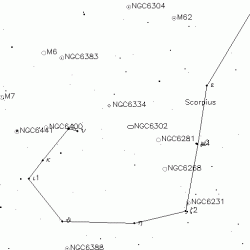 But don’t you be late observing the Bug Nebula yourself! NGC 6302 is located in Scorpius (RA 17 13 44 Dec -37 06 15). At around magnitude 9, this surprisingly bright planetary is well within the reach of a mid-size telescope and a treat to larger aperture. NGC 6302 was discovered by James Dunlop in 1826 with a handmade reflecting telescope he had constructed himself and the earliest known study of NGC 6302 is Edward Emerson Barnard who, in 1907, drew and described it.
But don’t you be late observing the Bug Nebula yourself! NGC 6302 is located in Scorpius (RA 17 13 44 Dec -37 06 15). At around magnitude 9, this surprisingly bright planetary is well within the reach of a mid-size telescope and a treat to larger aperture. NGC 6302 was discovered by James Dunlop in 1826 with a handmade reflecting telescope he had constructed himself and the earliest known study of NGC 6302 is Edward Emerson Barnard who, in 1907, drew and described it.
